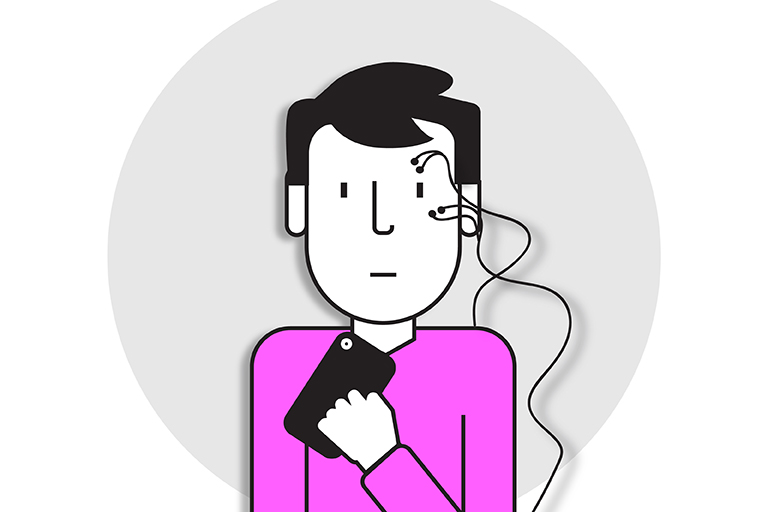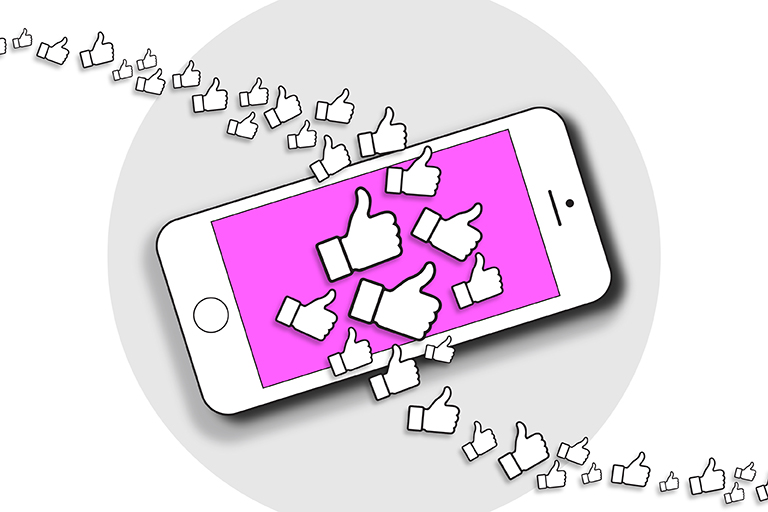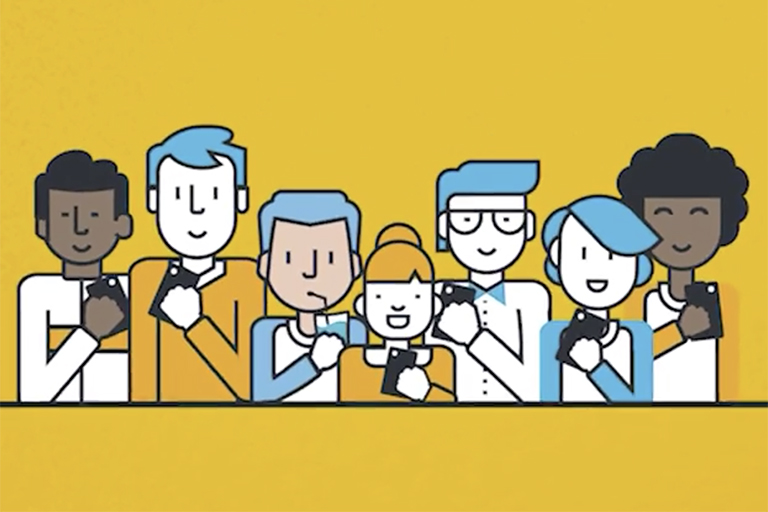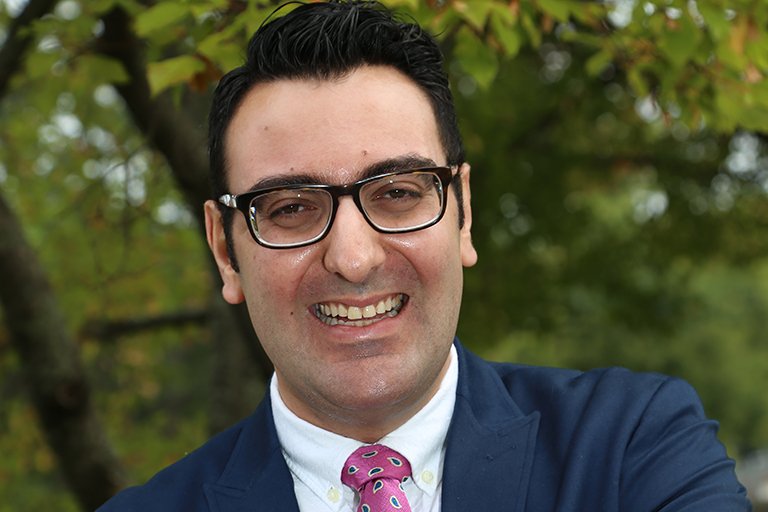In this digital age, marketers are using social media as a tool to connect brands to potential buyers every day, but the number of people on the internet is vast. How can companies effectively reach their target audience? What does it mean when people like their posts? Advertising and Public Relations’ Assistant Professor Saleem Alhabash is here to help answer these questions thanks to his research in ComArtSci’s Media and Advertising Psychology (MAP) Lab.
“I’m interested in what happens to people individually at the psychological level,” said Alhabash. “If we are able to understand how and why and with what effects people are using social media, we as advertisers, marketers and even advocacy communicators are able to provide them with better and more effective messages.”
Funded by the Department of Advertising and Public Relations, the MAP Lab brings together faculty and students to study the biopsychological effects of advertising and media. From health communication to media multitasking to social media, the lab has potential for every research interest.
Pressing the Like Button
One of Alhabash’s most recent published studies focused on the psychophysiological responses associated with social media engagement. Participants were brought into the MAP Lab and instructed to browse their Facebook feed for five minutes. During that time, Alhabash’s team of doctoral students, Nassar Almutairi, Chen Lou and Wonkyung Kim, recorded their psychophysiological responses.
Later, participants were given smaller segments of time to do different tasks like finding content to like, share or comment on or making a status update. Meanwhile, the research team collected data on their heart rate and skin conductance level, as well as their facial electromyography (EMG), which indicates pleasant and unpleasant emotional responses.

Sensors were placed on participants’ faces to gather muscle activation related to psychological responses. The team was looking at two muscle groups in particular: the corrugator supercilii, which is the frown muscle right above the eyebrow, and the orbicularis oculi under the eye that indicates pleasant emotion. Interestingly enough, Alhabash’s team didn’t find facial EMG activation for either of the muscle groups during the experiment. In other words, none of the content - whether the participant clicked the like button or not - encouraged a significant emotional response from the participants.
Data from the study also showed that prior to pressing the like button, participants’ heart rate and skin conductance levels indicate a potential orienting response, an automatic and nearly unconscious response to external stimuli. However, participants experienced higher levels of excitement and focused attention when writing a status update than when they merely liked a post.
“This is very intuitive because when we’re on Facebook, no one just goes to someone’s picture or post and thinks deeply or gets super excited before pressing the like button,” said Alhabash. “Whereas when you’re writing a status update, there’s more elaboration that involves more cognition. While we know this from gut feeling, intuition and observation, the cool part about this particular study is that it was able to document that in relation to actual data points.”
Discovering New Methodologies
While we typically group commenting, sharing, liking and posting together as social media engagement, Alhabash found that they’re very different from each other in terms of the psychological processes that precede them. The MAP Lab’s findings could have big implications for marketing and advertising agencies that put a lot of emphasis on metrics of virality. Some businesses actually pay influencers to like advertisements or content.
“The like button has become such an important aspect of the online experience and our findings are showing that it is sort of a thoughtless activity,” said Alhabash. “It’s not really an attitude of actual liking, but rather an automatic response to content that grabbed our attention.”

One of the things that makes this study so unique is that participants are actually using their own social media in real time. In most studies of this subject, participants are shown a cultivated piece of content and have the users pretend they’re using social media. Alhabash argues that confining and manipulating the stimuli in this manner limits the ways used to study to study social media.
“You’re not really extending it to the social experience,” said Alhabash. “Our method of letting people do whatever they want on social media and documenting what happens during that time and trying to make sense of it is a novel methodology that is just starting to be applied in social media and psychophysiology research.”
This new methodology raises important questions that Alhabash thinks the scientific community needs to be discussing: How are researchers studying social media from an experimental point of view? How are they asking people about their social media experiences or creating experiences that simulate the real world?
An Award-Winning Collaboration
Last spring, Marcus Collins, SVP, Executive Director of Social Engagement at Doner, was visiting MSU to talk to advertising students when he was invited to check out the MAP Lab. The approach intrigued Collins, who was working on a campaign for Potbelly Sandwich Shop. He began collaborating with Alhabash to test its impact on potential customers. Using the same psychophysiological measures, Alhabash and his team evaluated some of the major components of the campaign.
Traditional means of creative testing rely heavily on self-reported data, which is often fundamentally flawed. By tracking psychophysiological responses, the research team was able to provide empirical data that would lead to more accurate findings.
Doner’s campaign capitalized on the power of eliciting emotion to garner consumers’ attention and engagement on social media. They mined Twitter for posts expressing unfortunate situations and daily challenges and then targeted the individuals behind the accounts.

“[They delivered] posts that acknowledge these challenging moments and provide them with ways to make their day better, of course, by grabbing a sandwich, cookie or smoothie from Potbelly,” said Alhabash. “The genius part of the campaign was to capitalize on Potbelly’s environment and culture, where local singers are recruited to sing live during lunch hour and target individuals that the team identified as having a bad day and comedically include them in songs.”
In recognition of this creative solution and its use of the online platform, the campaign captured the attention of Adcraft Detroit, winning the Best in Digital Media Award for Innovation. Collins and Alhabash will be presenting the study’s findings and tips from this collaborative effort at the upcoming SXSW meeting in Texas this March.
“It feels rewarding to be part of this collaboration effort with Doner,” said Alhabash. “The rewarding aspect deals with the ability of evidence-based approaches to communication helping advertising and public relations practitioners achieve more effective campaign results. It really gives meaning to academic research by translating our approach to real-world applications.”
By Kaitlin Dudlets
